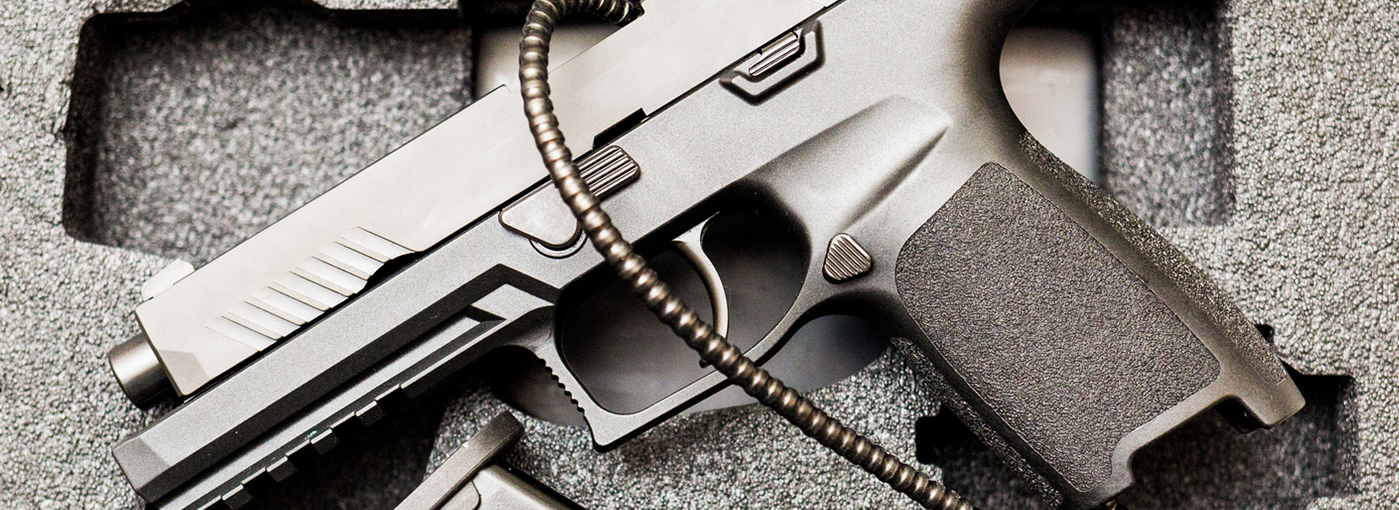Why You Should Dry-Fire Train
- by Admin 1
-

Why You Should Dry-Fire Train
Whether you’re a relatively new shooter or have years of experience, dry-fire practice can help you to improve your skills and keep you safe whenever you fire live ammo. Check out our list of reasons why dry-fire training is practical.
What is Dry-Fire Training?
According to the NRA Firearms Sourcebook, dry fire training is the act of releasing a firing pin on an unloaded chamber of a firearm. It is going through the motion of firing your weapon without ammunition or with dry-fire, dummy ammo. Shooters use this method of training as a cheap, efficient and safe way to clean up their firing technique. It allows the user of the firearm to go through different parts of firing, such as draws from the holster and reloading.
What are the benefits of dry-fire training?
Dry-fire training is a great way to work on your shooting technique without having to go to the range.
- It’s economical. While firing live rounds at a gun range can be an enjoyable experience, it can quickly get expensive. Dry-firing is the best way to keep working on your skills without spending cash on range visits or more ammunition.
- It can help you to refine your skills safely. If you have been around firearms for a long time, you understand the amount of precision it takes to fire a gun at a high level. Some of the skills dry-firing can help improve are:
- Coordination
- Draw speed
- Sight alignment
- Trigger control
- Firing from various positions
- It’s a great way to start or follow up on a session at the gun range. Before or after a day at the range, dry-firing can help you clean your technique. A warmup allows the shooter to get their trigger control down before firing a single shot. Training following a firing range session can help you to work out any problems you had without recoil.
- You can train (almost) anywhere. You can dry-fire practice at the range or in the comfort of your own home. If you don’t have enough time to make it to a practice facility, you can spend a few minutes each day at home working on your fundamentals. The rules of firearm safety still apply, never point your weapon at anything you aren’t willing to destroy, but you can use a designated area of your living space to work on your technique.
- Dry-firing can help you to identify any malfunctions with your gun safely. If you think your firearm may have a defect, using dry-fire rounds or snap caps can help you to find the problem without risking injury.
How to Dry-Fire Practice
While shooters of all levels practice in different ways, there are a few essential items to help you have the best dry-fire training possible.
- Always clear and re-clear before starting. Double and triple-checking your weapon is crucial to keep your dry-fire practice safe. Some experienced instructors go as far as to say that you should lock up any ammunition from your gun in a different room. If you take a break, which you should during a long training session, make sure to re-clear your firearm before resuming practice.
- Have a dedicated dry-fire training area. A dedicated area clear of people or valuables where you can practice safely is essential. A dedicated space will help you to take the exercise seriously and lower the chance of accidentally discharging live ammo. It’s also a good idea to practice with a backstop in place in the case of a misfire.
- Pick a small target. A target can help you to align your shot and focus your efforts during dry-fire training.
- Practice with an experienced shooter. While this isn’t required, having a trained hand to guide you through your shot can help you to practice more effectively. Just one practice with a more experienced individual can pay dividends. If you are inexperienced and you practice your firing or drawing motion incorrectly, you won’t perform better with live ammo.
- If you are new to shooting, start with the basics. Organizations like the NRA have lists of fundamental drills you can run through to make sure your shooting mechanics are safe and effective.
Tools for Dry-Fire Practice
While you don’t need anything more than your firearm of choice and a safe space, there are a few tools that can help you in your dry-fire practice.
- Snap caps or safety cartridges: These devices imitate the shape and feel of a bullet casing, but don’t fire a projectile. While most modern firearms don’t need any protection from dry-firing, snap caps can keep the pin from being damaged for older guns or rimfires.
- Laser practice or connected training: Electronic systems give you feedback to varying levels, which can help you improve your shot. Laser practice lets you see where your shots land. Other smartphone integrated training can give feedback on how well you are holding the gun or how precise your shooting motion is.
- Magazine and barrel blockers: Barrel and magazine blockers prevent bullets from being fired and help you let others know that your weapon can’t fire.
- A safe place to store your weapon: Having a safe, discreet place to store your gun after you finish your practice is crucial to keeping up a strong safety mentality. A piece of concealment furniture is a great place to keep your weapon after a dry-fire training session in your home.
Dry-fire practice is a safe, cheap and effective way for shooters of all skill levels to improve. Regular drills will help you to improve your technique whenever you visit the range. If you are looking for a great place to store your weapon between sessions, contact Liberty Home Concealment today to see how we can help you stash your firearm safely and conveniently.
